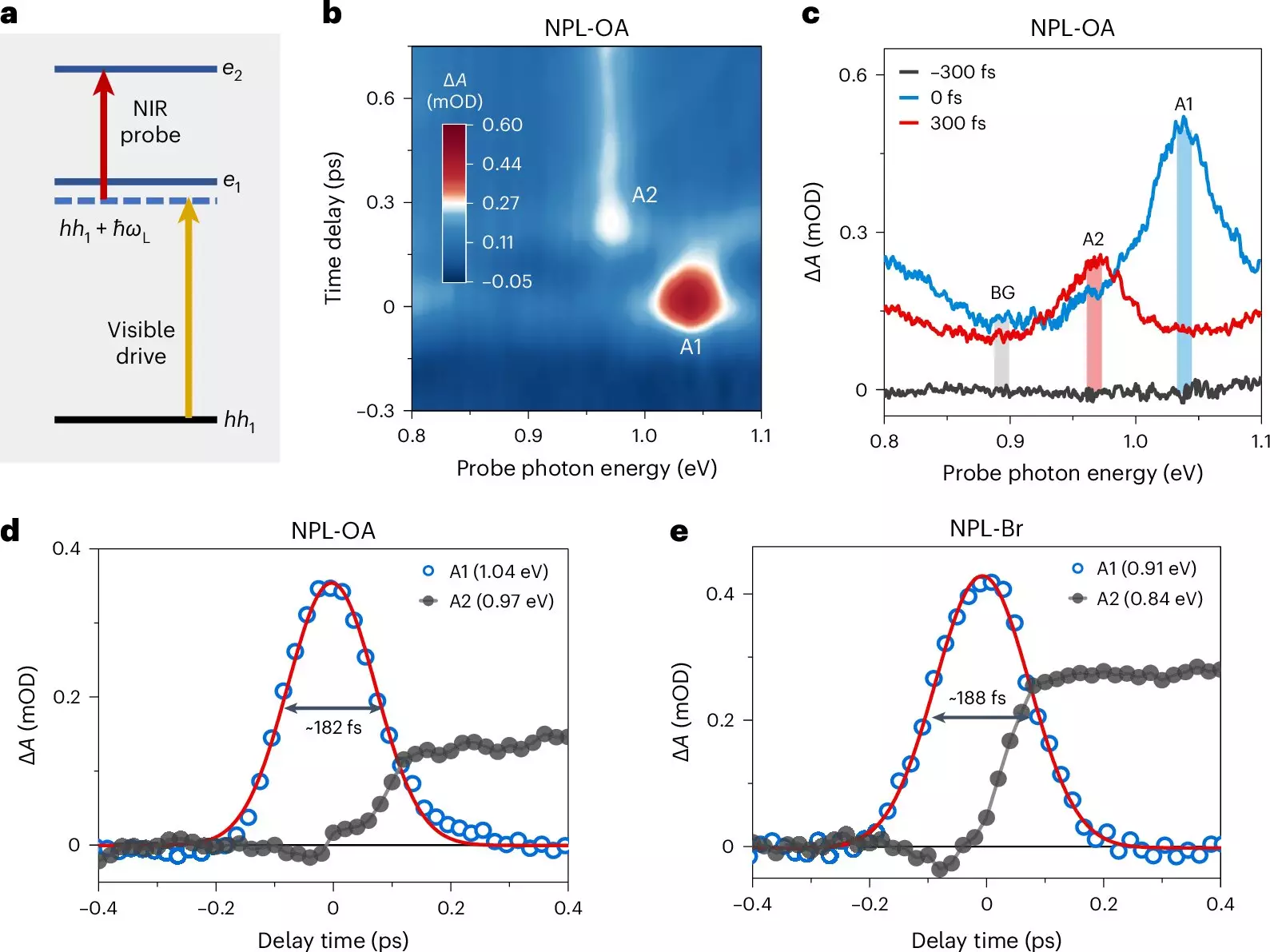Colloidal quantum dots (QDs), notable for their size-dependent electronic properties, have emerged as a groundbreaking advancement in the field of semiconductor nanocrystals. Physicists have long understood the implications of quantum mechanics on materials, yet translating these theoretical concepts into tangible nanostructures proved elusive until the advent of colloidal quantum dots. These nanoparticles exhibit distinct colors determined by their size, which serves as the most visible manifestation of the quantum size effect. This striking attribute paves the way for significant practical applications in photonics, displays, and even quantum computing.
Over the past few years, the scientific community has been fervently exploring the intriguing phenomena linked to quantum dots. Researchers focus on various quantum effects, including single-photon emission—a key requirement for quantum computing—and manipulation of quantum coherence, which can revolutionize information technologies. While cases of Floquet states, or photon-dressed states, are frequently referenced in connection to these phenomena, their direct observation has remained a formidable challenge within experimental physics.
Challenges in Direct Observation
Experiments aimed at identifying Floquet states have historically necessitated extreme conditions, such as ultra-low temperatures and high-vacuum environments. Researchers typically resorted to lasers in the infrared, terahertz, or microwave ranges to minimize any potential damage to sensitive samples. Despite these methods, the complexity involved in reshaping our understanding of quantum effects has proven an ongoing conundrum for scientists seeking to bridge theory and practice.
Recent breakthroughs, however, have opened new doors. A notable study from the Dalian Institute of Chemical Physics reveals the first instance of direct observation of Floquet states using all-optical spectroscopy within ambient conditions. Led by Prof. Wu Kaifeng, this groundbreaking research circumvents the need for traditional experimental setups by harnessing the unique properties of quasi-two-dimensional colloidal nanoplatelets.
The study’s findings center on the atomically-precise quantum confinement effects present within these colloidal structures. By producing significant interband and intersubband transitions, these nanoplatelets reveal distinct phenomena in the visible and near-infrared regions. The researchers found that a visible photon can interact with a heavy-hole state, effectively transitioning it into a Floquet state aligned with the electron’s quantized levels.
Furthermore, the findings demonstrated that these transient Floquet states do not simply dissipate post-excitation, contrary to previous assumptions. Rather, they observed that these states undergo a dephasing phenomenon, resulting in the genuine population of higher electron states within a mere few hundred femtoseconds. This rapid temporal behavior adds an exciting layer of dynamism in the manipulation of quantum states, enabling new pathways for practical applications.
Prof. Wu’s research not only validates direct observation of Floquet states under more accessible conditions but also uncovers a spectrum of spectral and dynamic properties that can enhance our understanding of coherent evolution in condensed matter systems. The implications extend beyond mere observation; they suggest exciting prospects for controlling optical responses in these materials.
Additionally, the concept of Floquet engineering—traditionally centered on the manipulation of quantum and topological properties in solid-state materials—could now expand. Insights gained from colloidal quantum dots may enable researchers to dynamically influence surface and interfacial chemical reactions through light fields without the need for resonant conditions.
In essence, the breakthroughs in quantum dot research signify a potential paradigm shift for quantum technologies, taking us one step closer to realizing innovative applications in quantum computing, sensing, and advanced material design. As researchers continue to explore and harness the unique properties of quantum dots, the future of quantum science appears increasingly bright.


Leave a Reply